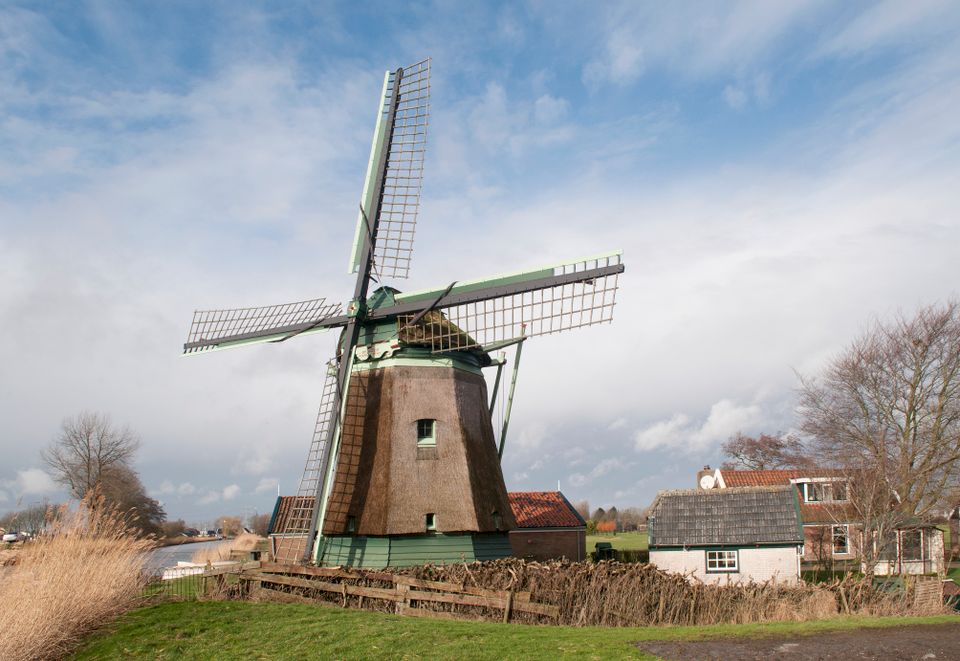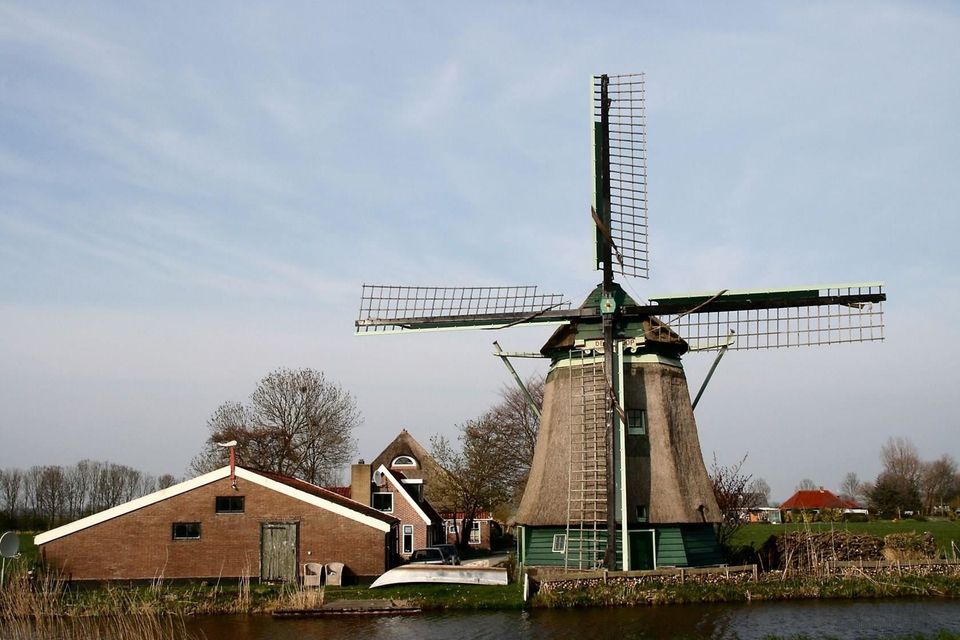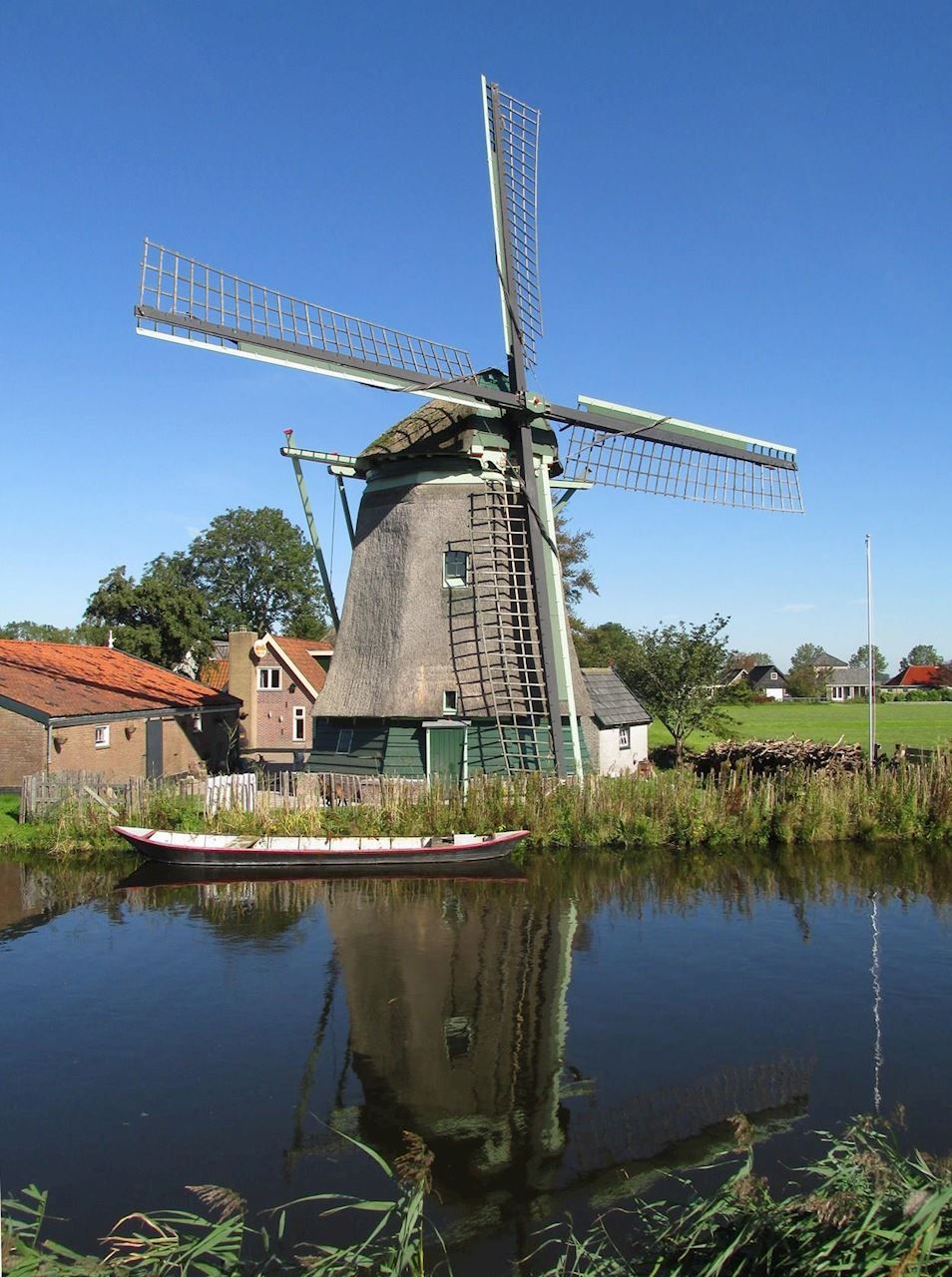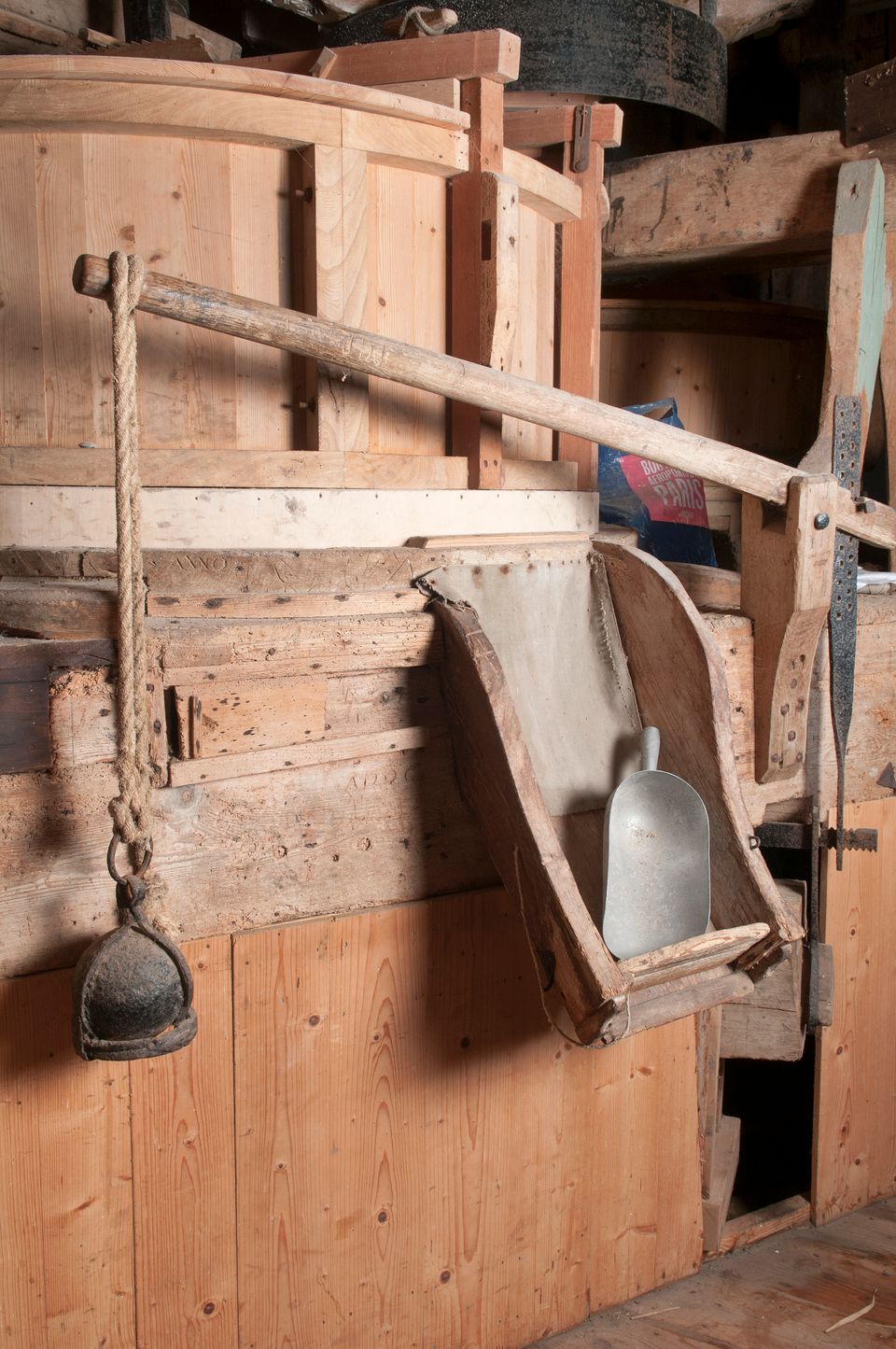Molen de Hoop
OUDE NIEDORP
Molen De Hoop was most likely built in 1641 as an octagonal flour mill. On maps from the early 17th century, there was already a mill on this site, presumably a standard mill.
Take a look
View all 9 pictures
Molen De Hoop was most likely built in 1641 as an octagonal flour mill. A corn mill is a mill that grinds flour from grain. The year 1641 is mentioned on the beard of the upper porter. The beard is a wooden board on the front underside of a windmill cap, primarily intended to prevent water from entering.
History of the mill A deed dated December 16, 1631 shows that there was another corn mill in Oude Niedorp. This is a purchase deed from Jacob Jacobsz. Seew. He bought the mill to move to another place. Through a 'wind letter', Seeuw received the right of the wind for the area in 'de Poelen'. This was originally a swampy area between the Waerd and the dike: the Dorpsstraat from the Verlaat to the Zuiderweg. After the reclamation of the Heerhugowaard in 1629, there was nothing left to say that the area 'de Poelen' was temporarily under water. Because Mr. Seeuw has asked to move a mill, we can assume that there was already a mill in the vicinity of Oude Niedorp before 1631. Presumably the relocated mill was lost due to fire or dilapidation. As a result, a new corn mill had to be built in 1641.
Molen de Hoop is, as it is called, an octagonal mill. The wooden construction consists of eight planes. The fact that the wooden octagon is really old is evident from various parts of the construction, at both the top and bottom of the octagon. The mill has a more than 100 years old and unique blade cross with steel beams, built in 1893 by the Pot company.
Millers From various deeds an overview can be made of the different owners and millers who kept the mill running. On May 31, 1723, the mill, house and yard are bought by Jan Dirksz. The Geus. The mill remained in the possession of the well-known miller family De Geus almost continuously until 1901. On March 31, 1901, Cornelis Snijboom became the new owner. In 1940, the sons Willem and Maarten take over the business. The occupation years were not the easiest for the newly started (acquired) company. But after the liberation, things quickly improved with the company. Willem had to stop in 1960 for health reasons. Maarten did not want to continue alone. The brothers therefore decided to end the company. Officially, the milling company C. Slijboom was closed on May 16, 1961.
On December 17, 1961, the mill was sold to the former municipality of Oude Niedorp for one guilder. Since then the mill has been well maintained, but turned sporadically.
The mill has been running regularly since 2000. Because the mill runs regularly, everything is well maintained. Every time the mill is running, this is actually an inspection where incipient problems are immediately noticed. There are three active millers, and you are welcome to watch the mill when it is turning.
Importance of the mill Until well into the 19th century, the presence of a corn mill in a village was of great importance to the population. Close to home, the miller ground the harvested wheat or rye from his own field for the daily bread to be baked. In a village, the corn miller was highly regarded. And if a miller ran into financial problems, the municipal council often looked for a solution. This was because of the great economic importance of having a mill in the village for the population.
The mill has the status of a national monument.
Sources Historical overview Flour mill 'De Hoop' Image bank of the Cultural Heritage Agency of the Netherlands via www.beeldbank.cultureelerfgoed.nl
Here you will find Molen de Hoop
Molenpad 11734 JM OUDE NIEDORP Plan your route naar Molen de Hoop
from your location












